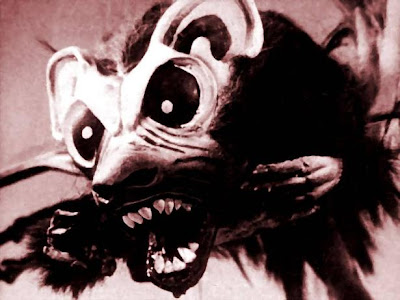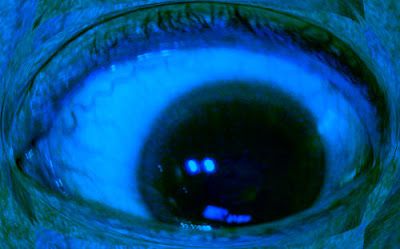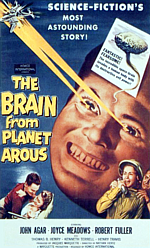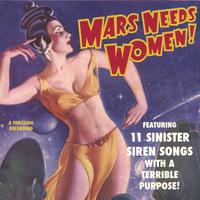
Saturday, October 27, 2007
Thursday, October 25, 2007
HEINLEIN'S FIVE RULES
 I'm strapped for time but here's something valuable that I can pass on with a minimum of effort. For everybody out there who writes, here's sci-fi writer Robert Heinlein's five rules for writing success. Ignore them at your peril!
I'm strapped for time but here's something valuable that I can pass on with a minimum of effort. For everybody out there who writes, here's sci-fi writer Robert Heinlein's five rules for writing success. Ignore them at your peril!
Rule 1) You must write.
 Rule 2) You must finish what you start.
Rule 2) You must finish what you start. Rule 3) You must refrain from rewriting, except to editorial order.
Rule 3) You must refrain from rewriting, except to editorial order. Rule4) You must put your story on the market.
Rule4) You must put your story on the market. Rule 5) You must keep it on the matket until it has sold.
Rule 5) You must keep it on the matket until it has sold. Science fiction author Robert J. Sawyer added his own sixth rule, which deserves to be added to the original five:
Science fiction author Robert J. Sawyer added his own sixth rule, which deserves to be added to the original five:
Rule 6) Start working on something else.

Nifty, huh!?
Labels:
robert heinlein,
rules of writing,
writing
MY SECOND FAVORITE COMIC STRIP
 After Milt Gross my favorite comic strip artist was Al Capp, and my very favorite Capp is "Fearless Fostick," a comic strip within a strip, inside of "L'il Abner. " Every once in a while Abner just had to stop what he was doing in his own story, sit under a tree, and read the latest goings-on of his favorite detective, Fearless Fostick. Click to enlarge.
After Milt Gross my favorite comic strip artist was Al Capp, and my very favorite Capp is "Fearless Fostick," a comic strip within a strip, inside of "L'il Abner. " Every once in a while Abner just had to stop what he was doing in his own story, sit under a tree, and read the latest goings-on of his favorite detective, Fearless Fostick. Click to enlarge. Of course, Fosdick was a takeoff of Dick Tracy. Imagine that, a strip that made fun of another strip! Capp even made fun of Chester Gould by creating a cartoonist character who was always being fired from the syndicate, named Lester Gooch.
Of course, Fosdick was a takeoff of Dick Tracy. Imagine that, a strip that made fun of another strip! Capp even made fun of Chester Gould by creating a cartoonist character who was always being fired from the syndicate, named Lester Gooch.Somebody who knew Gould is supposed to have said that Gould had had enough of Fostick. "Enough is enough!", he was supposed to have said. Someone else quoted Gould as saying that he loved Fostick because everytime Capp did a Fostick strip a couple more papers would pick up Dick Tracy.
 Fostick was immensely popular in its day. If anybody ever complained about the violence it never reached my kid ears.
Fostick was immensely popular in its day. If anybody ever complained about the violence it never reached my kid ears.
 Fostick was a goldmine for Wildroot Cream-Oil. When I was a kid I used to use Wildroot just because Fostick used it. You trusted Fostick. If he said a product was OK that was all the argument that you needed.
Fostick was a goldmine for Wildroot Cream-Oil. When I was a kid I used to use Wildroot just because Fostick used it. You trusted Fostick. If he said a product was OK that was all the argument that you needed.
 Fostick was immensely popular in its day. If anybody ever complained about the violence it never reached my kid ears.
Fostick was immensely popular in its day. If anybody ever complained about the violence it never reached my kid ears. Fostick was a goldmine for Wildroot Cream-Oil. When I was a kid I used to use Wildroot just because Fostick used it. You trusted Fostick. If he said a product was OK that was all the argument that you needed.
Fostick was a goldmine for Wildroot Cream-Oil. When I was a kid I used to use Wildroot just because Fostick used it. You trusted Fostick. If he said a product was OK that was all the argument that you needed. 
Just for the heck of it, here's a picture Capp drew of himself. And, by the way, the sample pages above are taken from three different stories. If you couldn't figure out what the story was, that's why.
Tuesday, October 23, 2007
THE RETURN OF THE PHILOSOPHY GIRLS
 MAGNOLIA: "Hey, how do I get to be a Philosophy Girl? I wanna hang out with you girls and talk about....you know, philosophy and stuff."
MAGNOLIA: "Hey, how do I get to be a Philosophy Girl? I wanna hang out with you girls and talk about....you know, philosophy and stuff."  MILDRED: "Well, it would help if you were a utilitarian like us. You know, the greatest good for the greatest number?"
MILDRED: "Well, it would help if you were a utilitarian like us. You know, the greatest good for the greatest number?" MAGNOLIA: "Utilitarian!?? Pffft! That's so yesterday's news! Who decides what's good? What if slave owners decided?"
MAGNOLIA: "Utilitarian!?? Pffft! That's so yesterday's news! Who decides what's good? What if slave owners decided?" DAISY: "Well, I guess you'd need some way to decide what's good before you could be a utilitarian."
DAISY: "Well, I guess you'd need some way to decide what's good before you could be a utilitarian." PETUNIA: "Haw! Well then why do we need Utilitarianism? It can't stand alone! By itself it lapses into absurdity! If killing an orphan results in the greatest good, then by all means, kill the orphan! And who defines good? Hitler? Stalin? Utilitarianism has no objective principals!
PETUNIA: "Haw! Well then why do we need Utilitarianism? It can't stand alone! By itself it lapses into absurdity! If killing an orphan results in the greatest good, then by all means, kill the orphan! And who defines good? Hitler? Stalin? Utilitarianism has no objective principals! SUNFLOWER: "It kinda feels like Utilitarianism only works in a society where there's a tradition that says what's good."
SUNFLOWER: "It kinda feels like Utilitarianism only works in a society where there's a tradition that says what's good." SNAP-DRAGON: "I still like Utilitarianism. I mean, what else have we got? Gee, I'm getting itchy!"
SNAP-DRAGON: "I still like Utilitarianism. I mean, what else have we got? Gee, I'm getting itchy!"Monday, October 22, 2007
TWO VERSIONS OF "TELL HIM"
Here's (above)one of my all-time favorite music videos, the Exciters singing "Tell Him." Assuming that I'm right, and this is as good as I think it is, then what makes it so good?
Well, of course Brenda Reid had a great voice and the song and arrangement was perfect. Reid had soul, no doubt about it, and she sings with utter sincerity. Maybe she had a background in gospel.
When you have a song this bouncy it must be tempting to play it 100% as a dance song as this singer (above) did on American Idol. She does a nice job but she comes off as shallow. Reid makes us feel the point of the song at the same time she plays it for entertainment. In her version the rhythm reinforces the point.
The song is about how colossal and majestic love is. When you have it, drop everything and embrace it because nothing else is more important. That's a powerful statement. You can't convincingly make that point with a second-rate song.
And such a song has to be something that makes people tap their feet, something that's social and reminds people how much they need other people, how much they delight in being with other people. The song warns us that our kind of creature can't be happy unless we give ourselves up to overpowering emotions like love and lust.
Actually, I've always thought of animation this way. You need a central assumption to tell a good cartoon story. Maybe the assumption is something as simple as "It's great to be alive!" If that's what you want to convey then you can't do it with a second-rate story or second-rate cartooning. It has to be the best you can do, otherwise the medium is fighting the message.
Saturday, October 20, 2007
A SPUMCO ARTIST HITS THE BIG TIME
A couple of days ago I watched Tarantino's "Grindhouse" on disc and nearly fell out of my chair when the end credits came up. The song over the credits was "Chick Habit" by April March! April was a layout artist on the second season of Ren & Stimpy! Check out this YouTube version of the song (above).
We all thought April had talent but most of us weren't familiar with the French Yay-Yay (spelled right?) style that she worked in. Now I feel stupid for not having paid more attention. I'm really happy for her. Here's (above) a video of another of her songs, "Mignonette."
Here's a fan favorite (above): "Cet Air-La."
I assume everyone here is familiar with the Yay Yay style, but in case you're not here's (above) a sample by Sylvie Vartan.
Friday, October 19, 2007
MOST PAINTERS DON'T USE ENOUGH DARKS

Thanks to a link on Michael Sporn's site I discovered a terrific blog devoted entirely to animation backgrounds.
Michael's blog: http://www.michaelspornanimation.com/splog/
Rob Richard's background blog: http://animationbackgrounds.blogspot.com/
The one at the top (above) is one of my favorites, maybe from "Saludos Amigos." Man, I'd give a lot to own that! One of these days I'll copy it just to see what I can learn from it! I've learned something already, namely the primal graphic appeal of the dog penis (the red-tipped mountain on the upper right).
 Here's (above) another example of that, from a Popeye film. It does seem to add something.
Here's (above) another example of that, from a Popeye film. It does seem to add something. Looking at the Disney backgrounds I'm struck by how often the artists used very dark colors. I envy audiences who saw these films in technicolor. Technicolor reproduced rich, saturated darks without losing the details.
Looking at the Disney backgrounds I'm struck by how often the artists used very dark colors. I envy audiences who saw these films in technicolor. Technicolor reproduced rich, saturated darks without losing the details.
 Is this background (above) from "Alice" or "Peter Pan?" It doesn't look like much when shown small like this, so be sure to click to enlarge.
Is this background (above) from "Alice" or "Peter Pan?" It doesn't look like much when shown small like this, so be sure to click to enlarge. Here the darks aren't just an an accent, they completely dominate the picture. In spite of that, the picture comes off as colorful. I'll bet characters read beautifully on top of this. I'm guessing that this is inspired by Mary Blair, who in turn might have been inspired by 17th century Dutch flower paintings.
 Rob provides us with a picture (above) for comparison.
Rob provides us with a picture (above) for comparison.
 Even Pinocchio BGs (above) had lots of darks.
Even Pinocchio BGs (above) had lots of darks.
 TVs used to be bad at reproducing darks. Maybe the Trinitron was the first to do it successfully. A whole generation of artists saw films like Alice only on inferior TV monitors and probably couldn't understand why the backgrounds were so well-regarded.
TVs used to be bad at reproducing darks. Maybe the Trinitron was the first to do it successfully. A whole generation of artists saw films like Alice only on inferior TV monitors and probably couldn't understand why the backgrounds were so well-regarded.
 Rob provides us with a picture (above) for comparison.
Rob provides us with a picture (above) for comparison. Even Pinocchio BGs (above) had lots of darks.
Even Pinocchio BGs (above) had lots of darks. TVs used to be bad at reproducing darks. Maybe the Trinitron was the first to do it successfully. A whole generation of artists saw films like Alice only on inferior TV monitors and probably couldn't understand why the backgrounds were so well-regarded.
TVs used to be bad at reproducing darks. Maybe the Trinitron was the first to do it successfully. A whole generation of artists saw films like Alice only on inferior TV monitors and probably couldn't understand why the backgrounds were so well-regarded. Sometimes Disney took the dark thing too far, as with this downshot of Goofy's home (above). The garish orange house looks like it was pickled in formaldehyde. The darks seem menacing and inappropriate to the subject. Even so, it's an interesting experiment.
Subscribe to:
Comments (Atom)


